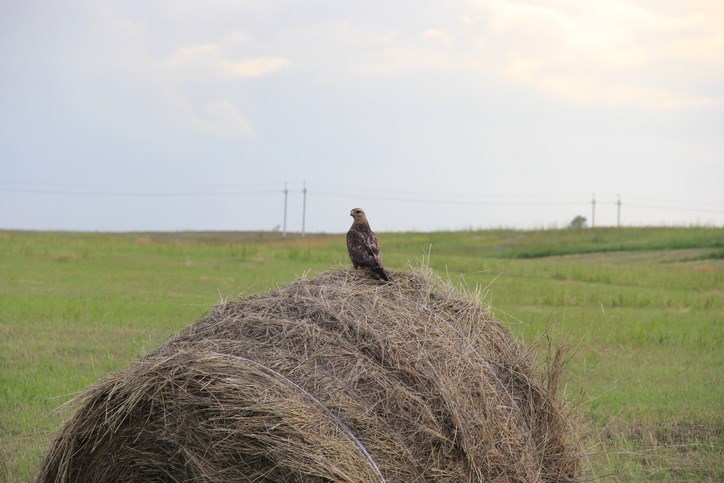Haying continues throughout the province with few rainfall delays this past week. Livestock producers now have 15 per cent of hay crop cut and 75 per cent baled or put into silage. Many producers across the province have finished their haying operations. Hay quality is rated as four per cent excellent, 40 per cent good, 34 per cent fair and 22 per cent poor. Many farmers have indicated that hay yields are below normal this year, particularly in areas that received less rainfall in early summer and a second cut is extremely unlikely.
Heat has accelerated the ripening and maturation of all crops across the province and some producers have begun harvesting. The estimated yields for many crops across the province is expected to be well below average. Any rain now won’t increase yields but would have a positive effect next year.
Rainfall this past week varied throughout the province, ranging from none in many areas to 55 mm in areas around Indian Head and Neilburg. The Lumsden area received 33 mm, the Langenburg area 30 mm and the Saltcoats area 24 mm.
Above normal temperatures combined with a lack of substantial rainfall have caused topsoil moisture levels to continue to trend downward. Cropland topsoil moisture is rated as four per cent adequate, 38 per cent short and 58 per cent very short. Hay and pasture land topsoil moisture is rated as two per cent adequate, 27 per cent short and 71 per cent very short.
The prolonged drought conditions have rapidly deteriorated crop conditions and a majority of crops are rated as poor to fair. All crops are well ahead of their normal developmental stages for this time of year and many are ripe enough to begin harvest. Some producers have started harvesting, while others are still assessing yields and determining if cutting and baling is the better option.
Strong winds, drought stress, hail, heat and grasshoppers took their toll on crops this past week. There is little producers can do at this point in the season to address these environmental factors out of their control.
Producers are busy finishing up haying, conducting yield assessments, harvesting or getting equipment and bins ready for harvest.
Producers are reminded that in response to the feed shortage this year, Saskatchewan Crop Insurance Corporation is doubling the Low Yield Appraisal threshold values for customers who salvage their cereal or pulse crops as feed, without negatively impacting future individual coverage. Customers are asked to contact their local SCIC office before they graze, bale or silage any damaged crops to discuss their options. Additionally, the Government of Saskatchewan is making changes to temporarily increase the maximum funding a livestock producer can receive from the Farm and Ranch Water Infrastructure Program (FRWIP) for dugouts, wells and pipelines for agricultural use. This change will be in effect for the April 1, 2021 to March 31, 2022, time period. The maximum rebate for livestock producers during this time period will increase from $50,000 to $150,000. The first $50,000 will be based on a 50-50 cost-share and the remaining $100,000 will be on a 70-30 government-producer cost-share. Producers can contact the Agriculture Knowledge Centre at 1-866-457-2377 for more information.
We would like to also remind producers that the Farm Stress Line is available for support if you need it. It is a confidential service, available 24-hours-a-day, seven-days-a-week, toll-free at 1-800-667-4442. Calls are answered by Mobile Crisis Services Regina, a non-profit, community-based agency and there is no call display.




